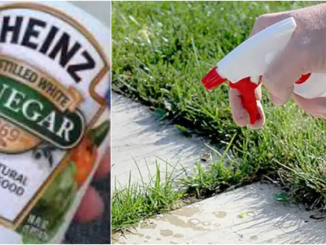
Lovage (Levisticum officinale) is an ancient herb that has fallen out of favor in modern kitchens, but it’s time for a revival.
Known for its robust flavor and versatility, lovage is often described as a cross between celery and parsley.
Beyond its culinary uses, this perennial herb is packed with medicinal properties and is incredibly easy to grow, making it a must-have for any herb garden.
Here’s everything you need to know about how to grow and use lovage.
What Is Lovage?
Lovage is a hardy perennial herb native to Southern Europe but is now grown worldwide. It belongs to the Apiaceae family, which includes carrots, parsley, and celery.
Lovage can grow up to 6 feet tall, with deeply divided green leaves, yellow umbrella-shaped flowers, and aromatic seeds.
- Flavor Profile: A strong, celery-like flavor with hints of parsley and anise.
- Culinary Uses: Leaves, stems, seeds, and roots are all edible, making lovage a versatile addition to your kitchen.
- Medicinal Benefits: Known for its digestive, diuretic, and anti-inflammatory properties.
Why Grow Lovage?
- Low Maintenance: Lovage is incredibly easy to grow and thrives in various conditions.
- Perennial: Once established, it comes back year after year.
- Versatility: Every part of the plant is edible and can be used in cooking, teas, and home remedies.
- Pollinator-Friendly: Lovage flowers attract bees and beneficial insects, supporting garden biodiversity.
- Space-Saving: One plant produces an abundance of leaves, stems, and seeds, reducing the need for multiple plants.
How to Grow Lovage
1. Choose the Right Location
- Sunlight: Lovage prefers full sun but can tolerate partial shade.
- Soil: Well-drained, rich soil with a pH of 6.5-7.5 is ideal.
- Spacing: Give each plant about 2-3 feet of space as lovage can grow quite large.
2. Planting Lovage
- From Seeds:
- Sow seeds indoors 6-8 weeks before the last frost.
- Transplant seedlings outdoors once the danger of frost has passed.
- Alternatively, sow seeds directly in the garden in early spring or fall.
- From Divisions:
- Divide mature lovage plants in spring or fall.
- Plant divisions in prepared soil and water thoroughly.
3. Watering and Feeding
- Lovage prefers consistently moist soil but doesn’t tolerate waterlogging.
- Add compost or organic matter to the soil at planting time.
- Fertilize with a balanced organic fertilizer in early spring and mid-summer.
4. Maintenance
- Pruning: Cut back stems after flowering to encourage new growth.
- Weeding: Keep the area around lovage free from weeds to reduce competition for nutrients.
- Mulching: Apply a layer of mulch to retain soil moisture and regulate temperature.
5. Harvesting Lovage
- Leaves: Harvest young leaves as needed for the best flavor.
- Stems: Cut stems in early summer to use fresh or dried.
- Seeds: Collect seeds once they turn brown and dry on the plant.
- Roots: Harvest mature roots in fall for medicinal or culinary uses.
Using Lovage in the Kitchen
Lovage is incredibly versatile and can be used in a variety of dishes. Here’s how to incorporate it into your cooking:
- Leaves:
- Add to soups, stews, and broths for a celery-like flavor.
- Chop finely and mix into salads or herb butters.
- Use as a garnish for potato or egg dishes.
- Stems:
- Use as a substitute for celery in recipes.
- Hollow stems can serve as eco-friendly straws for Bloody Marys or other beverages.
- Seeds:
- Add to bread, crackers, or pickling brine.
- Grind into a spice blend for seasoning meats or vegetables.
- Roots:
- Roast or boil lovage roots as a flavorful vegetable side dish.
- Use dried roots to make herbal teas.
Medicinal Benefits of Lovage
Lovage has been used in traditional medicine for centuries. Its health benefits include:
- Digestive Health:
- Relieves bloating and indigestion.
- Acts as a natural diuretic to reduce water retention.
- Anti-Inflammatory Properties:
- Helps soothe joint pain and inflammation.
- May alleviate symptoms of arthritis.
- Respiratory Support:
- Eases coughs and clears mucus from the respiratory tract.
- Skin Health:
- Used in poultices to treat minor wounds and irritations.
- Immune Boost:
- Rich in antioxidants that help fight free radicals.
How to Make Lovage Tea:
- Steep 1-2 teaspoons of dried lovage leaves or roots in hot water for 5-10 minutes.
- Strain and enjoy warm to soothe digestion or cold as a refreshing herbal drink.
Companion Planting with Lovage
Lovage is a great addition to any garden because it pairs well with other plants. It’s a natural insect repellent and attracts beneficial pollinators.
- Good Companions: Tomatoes, potatoes, carrots, and other herbs like parsley and dill.
- Avoid Planting With: Lovage is generally non-competitive, but avoid overcrowding with other large plants.
Storing and Preserving Lovage
- Drying:
- Hang leaves and stems in a cool, dark place until completely dry.
- Store in airtight containers for up to a year.
- Freezing:
- Chop leaves and stems, then freeze in ice cube trays with water or olive oil.
- Seeds:
- Store in a cool, dry place to maintain freshness.
- Roots:
- Wash, peel, and freeze for long-term storage.
Common Questions About Growing Lovage
- How long does lovage take to grow?
- Lovage germinates in 10-14 days and reaches maturity in about 90 days.
- Is lovage invasive?
- Lovage can spread through self-seeding, but it’s not considered invasive. Deadhead flowers to control spread.
- Can lovage grow in containers?
- Yes, but use a large pot to accommodate its deep roots and tall growth.
- Does lovage die back in winter?
- Lovage goes dormant in winter and regrows in spring.
Lovage is a forgotten herb that deserves a place in every garden. Its robust flavor, medicinal benefits, and ease of cultivation make it a versatile and valuable addition to your herb collection.
Whether you’re using it to enhance your culinary creations or harnessing its healing properties, lovage is a true garden powerhouse.
Start growing lovage today and rediscover the many ways this ancient herb can enrich your life. Share this guide with fellow gardening enthusiasts and inspire them to embrace lovage as a must-have herb!


